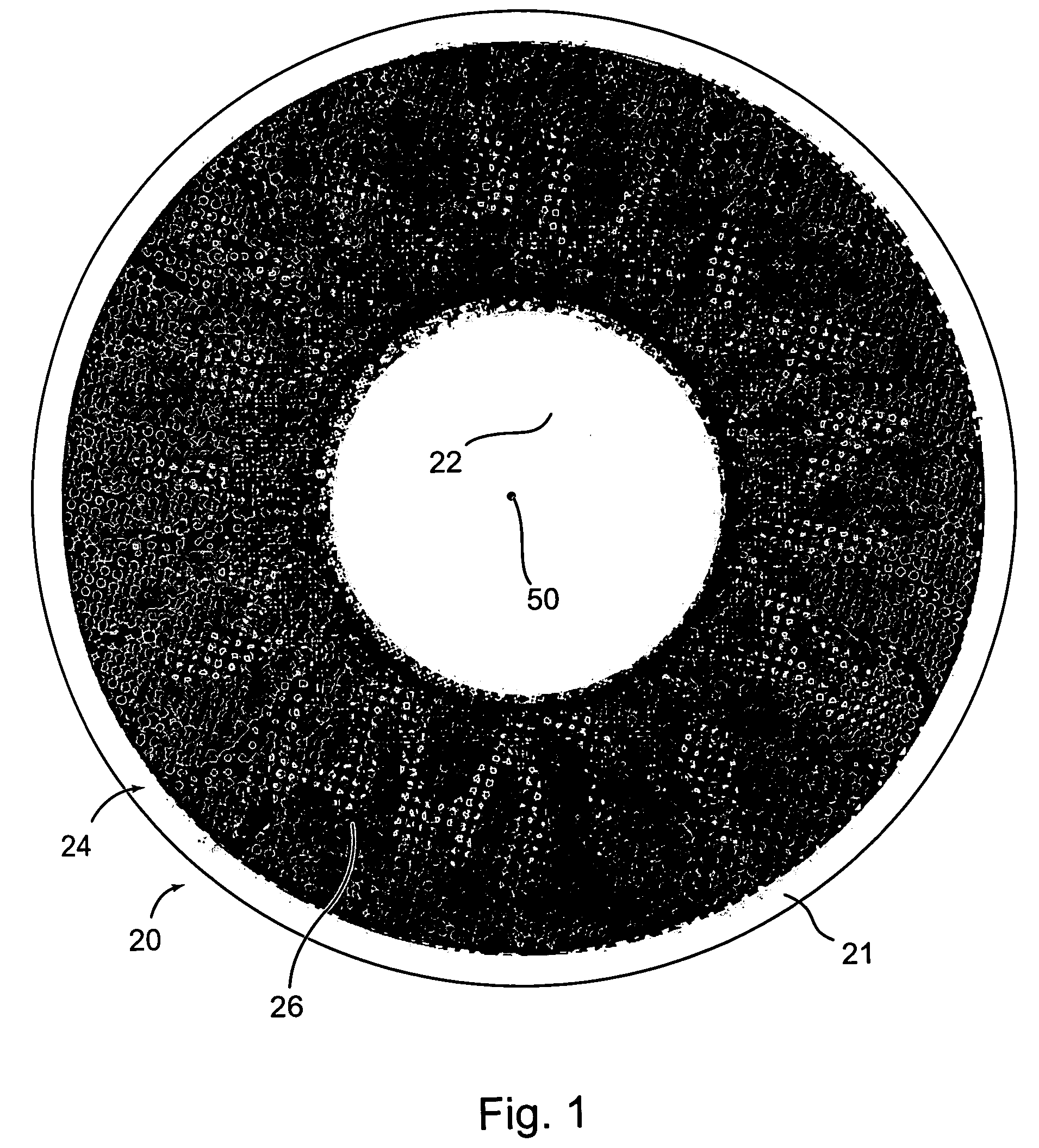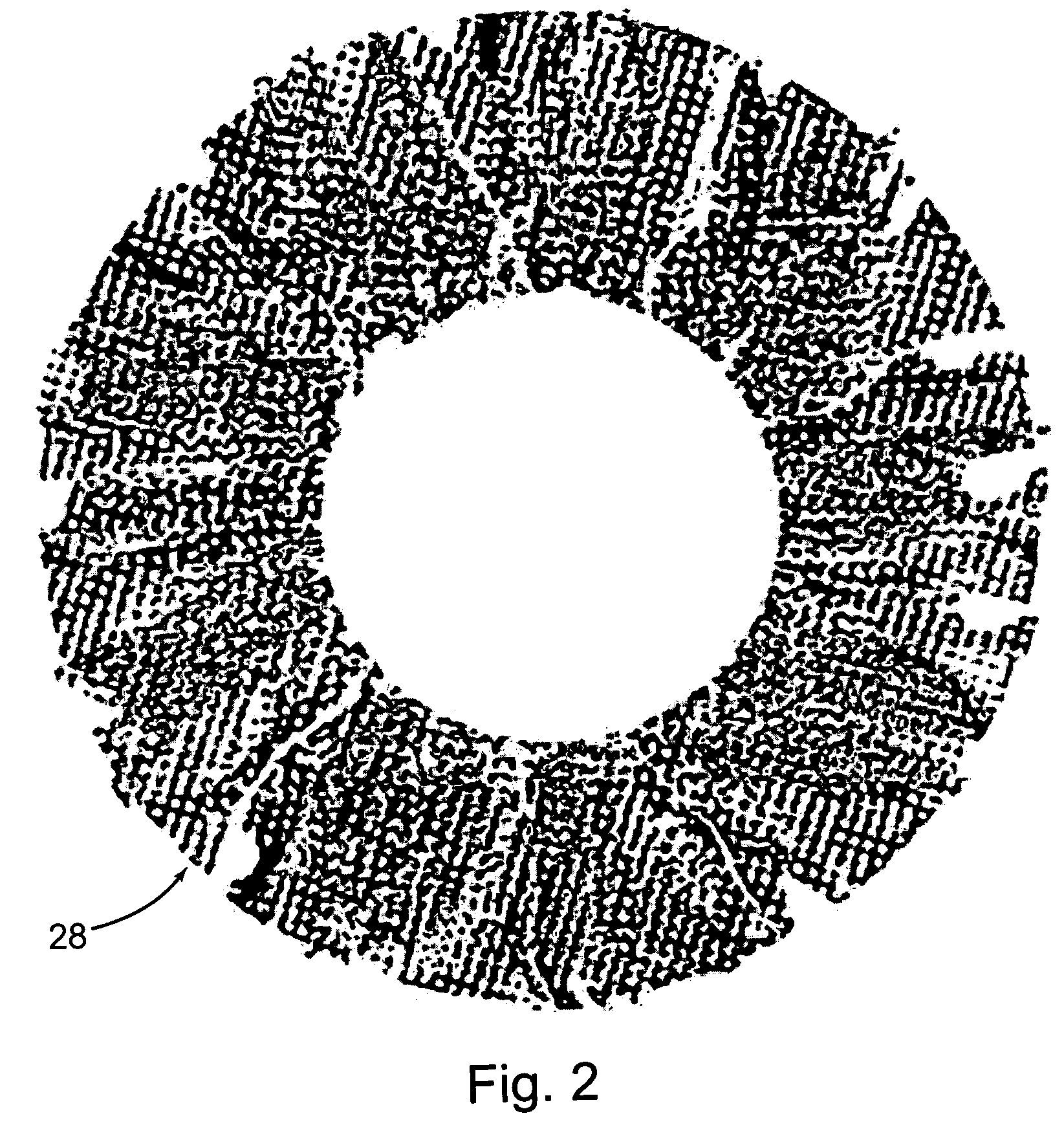Colored contact lens
a contact lens and color technology, applied in the field of colored contact lenses, can solve the problems of not being able to change the color of the apparent eye the appearance color of some people wearing the lenses does not look natural, and the conventional cosmetic contact lenses are not viable ways to change the appearance of the iris color. achieve the effect of greater intricacy
- Summary
- Abstract
- Description
- Claims
- Application Information
AI Technical Summary
Benefits of technology
Problems solved by technology
Method used
Image
Examples
Embodiment Construction
[0030] Referring now to the drawings and first more particularly to FIG. 1, a contact lens of the present invention is indicated in its entirety by the reference numeral 20. The contact lens 20 comprises a contact lens substrate 21 having a generally uncolored pupil region, generally indicated at 22, an annular-shaped iris region, generally indicated at 24. The lens substrate 21 is preferably a hydrophilic contact lens. The annular-shaped iris region 24 surrounds the pupil region 22. The contact lens 20 further comprises a multicolored pattern, generally indicated at 26, on the lens substrate 21. The multicolored pattern 26 is on the iris region 24. As used herein, the phrase “generally uncolored” when referring to a region of the contact lens means the region is either clear, transparent, or only slightly colored and translucent and non-opaque. The pupil region 22 must be sufficiently devoid of colorant to enable the wearer to see through the contact lens.
[0031] The multicolored p...
PUM
 Login to View More
Login to View More Abstract
Description
Claims
Application Information
 Login to View More
Login to View More - R&D
- Intellectual Property
- Life Sciences
- Materials
- Tech Scout
- Unparalleled Data Quality
- Higher Quality Content
- 60% Fewer Hallucinations
Browse by: Latest US Patents, China's latest patents, Technical Efficacy Thesaurus, Application Domain, Technology Topic, Popular Technical Reports.
© 2025 PatSnap. All rights reserved.Legal|Privacy policy|Modern Slavery Act Transparency Statement|Sitemap|About US| Contact US: help@patsnap.com



